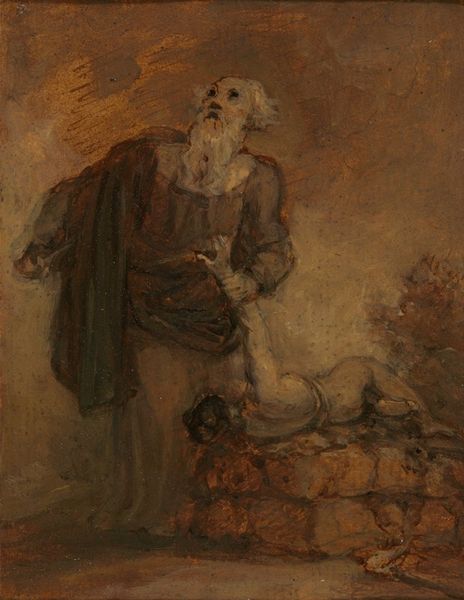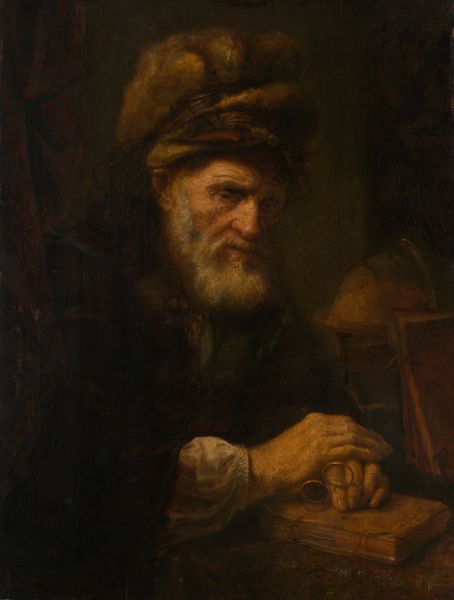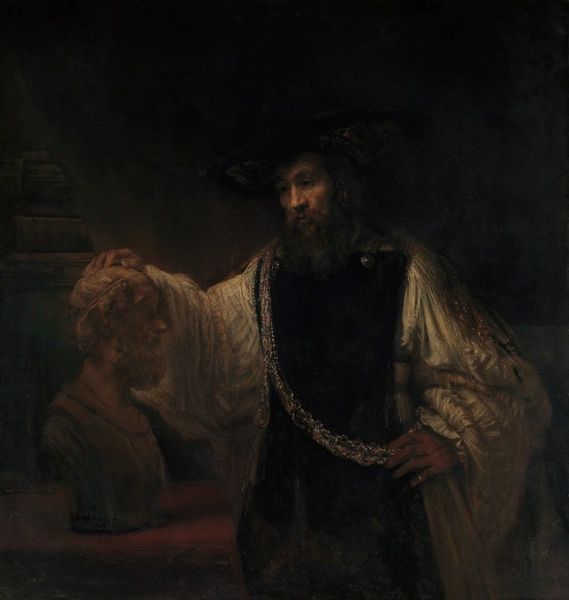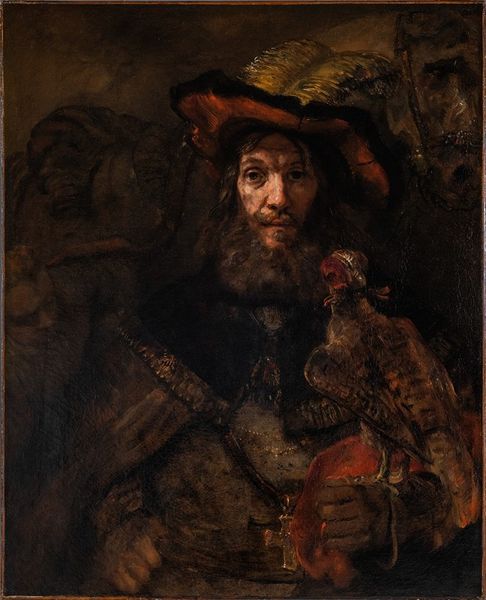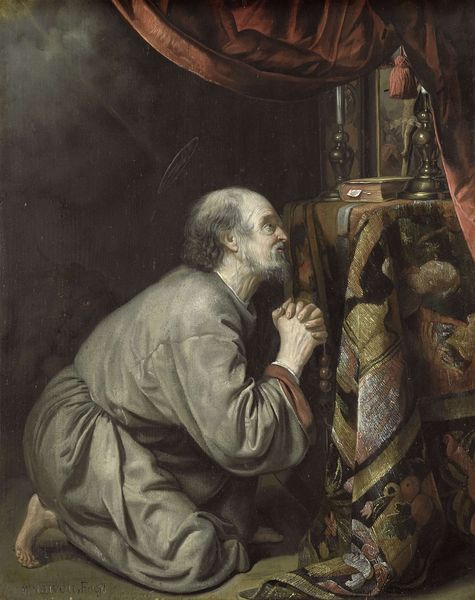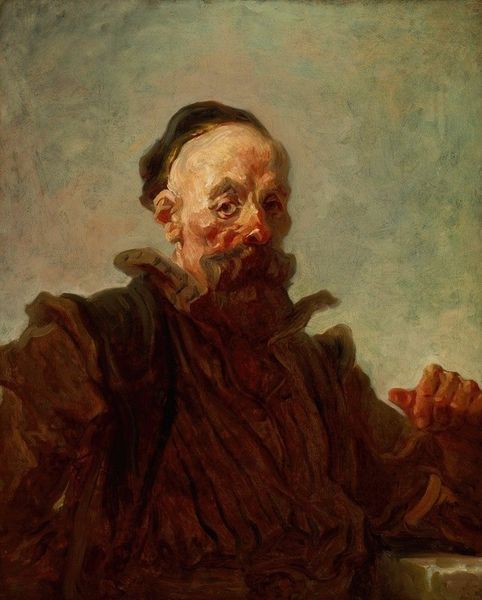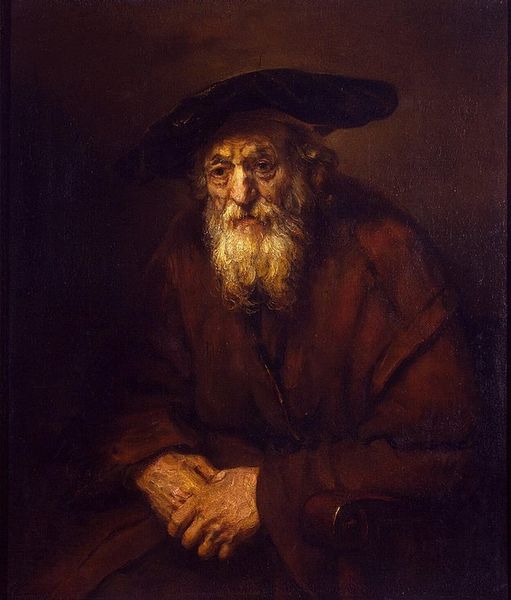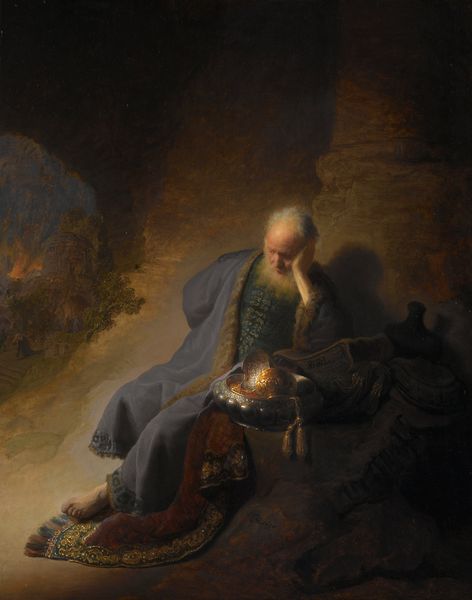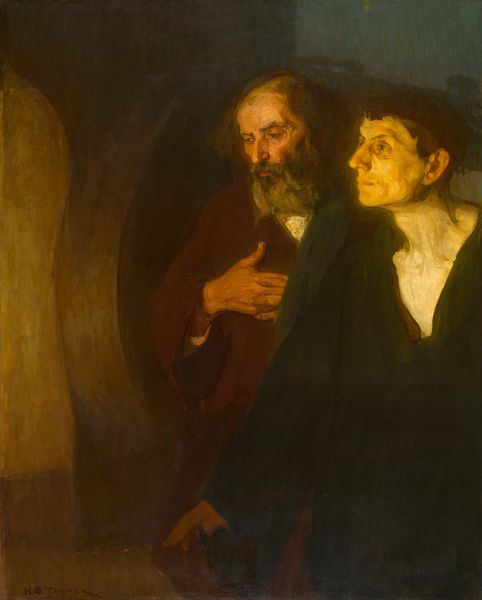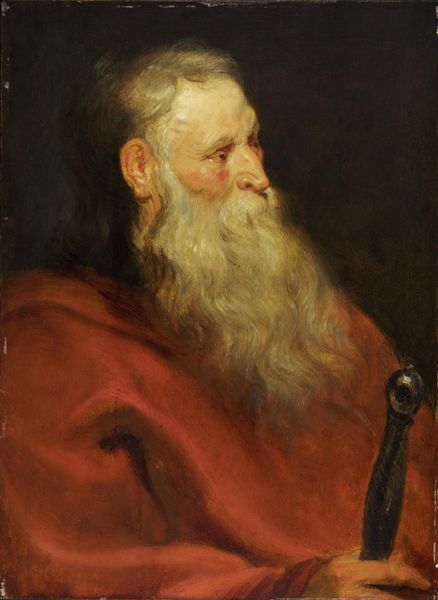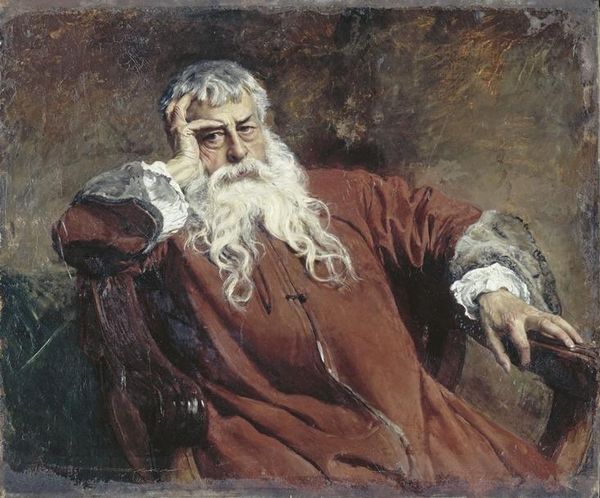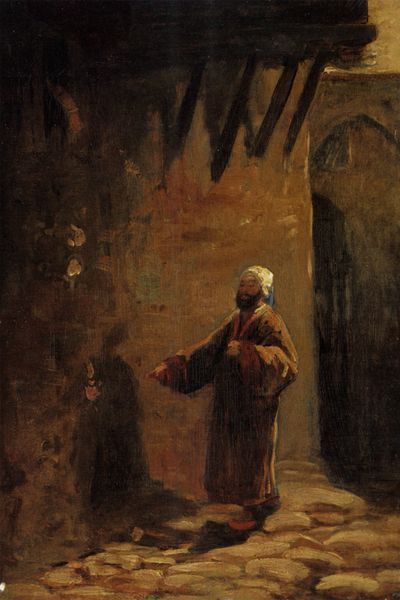
Copyright: Public Domain: Artvee
Eastman Johnson’s painting presents an unnamed man confined, a stark visual representation of captivity and loss of freedom. The window’s bars loom, underscoring his isolation. Notice the manacle in his hand. The emotional weight of this symbol reverberates through history, echoing in the chained figures of antiquity and the shackled slaves of more recent times. This motif of restraint—the binding of human will—resurfaces repeatedly, a testament to humanity's ongoing struggle with power and subjugation. It also appears, for instance, in images of Prometheus bound to a rock, an emblem of defiance against the divine. Here, the prisoner's grip evokes a deep, subconscious connection to collective memories of oppression. The pathos of the scene lies not just in his physical imprisonment but in the psychological impact of denied liberty. The visual language of the manacle is a potent trigger, engaging our empathy and stirring a primal fear of confinement. The manacle continues to reappear, evolving to carry new cultural and political connotations, yet forever bound to its origins.
Comments
No comments
Be the first to comment and join the conversation on the ultimate creative platform.
